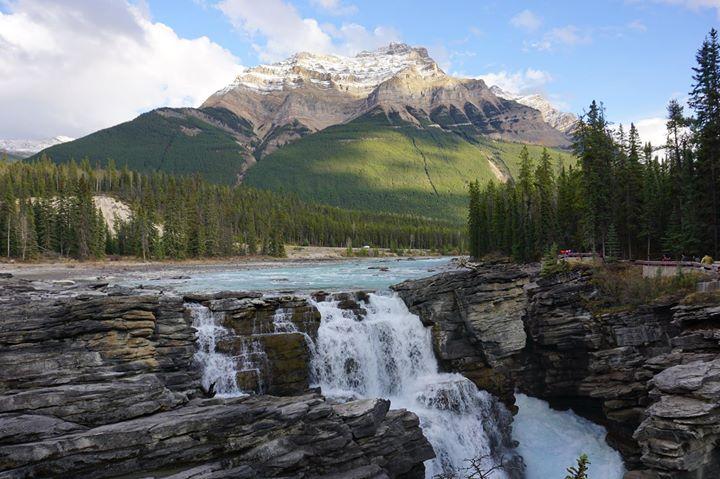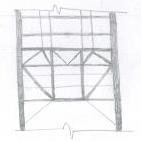-
Posts
1470 -
Joined
-
Last visited
-
Days Won
444
Reputation Activity
-
 UmarMakhzumi got a reaction from Badar (BAZ) in R.C.C Slab Failure
UmarMakhzumi got a reaction from Badar (BAZ) in R.C.C Slab Failure
Wsalaam..
First, we need to understand why this happened.
1) Was this because the existing design was inadequate. -> You need to do validate existing design to check this.
2) Was this because the construction wasn't as per the design. -> I doubt you will have any construction record so you need to see photos of construction if available to make sure the lengths were right. Get some additional NDTs to confirm rebar size, spacing, cover, concrete strength to figure out the problem.
3) Based on above you, you can suggest the path forward.
Hope that helps.
-
 UmarMakhzumi reacted to Badar (BAZ) in Crack width
UmarMakhzumi reacted to Badar (BAZ) in Crack width
Yes!
Needless to say: cracked. One also need to specify the source of reinforcement as well via "cracking analysis options".
-
 UmarMakhzumi got a reaction from JL07 in Building Drifts In Etabs
UmarMakhzumi got a reaction from JL07 in Building Drifts In Etabs
HI @JL07,
I am working on a US job right now and we do include the live load, anchor load with dead and seismic.
I am not sure how exactly the code words it out but its standard practice in the company I work for reasons explained above. Seismic LC's (for drift) are without redundancy factor and deflections from LCs are amplified by multiplying the deflection to Cd/Ie.
Hope that helps.
Thank you.
-
 UmarMakhzumi reacted to Badar (BAZ) in stiffness matrix from mode shape
UmarMakhzumi reacted to Badar (BAZ) in stiffness matrix from mode shape
I have a vague idea on how to approach it. But, yo should ask this question to some one in academics. Most of the practicing structural engineers do not need to do this in their projects; if you dot not do something often, then that concept goes away after period of time.
Vague Idea
for a particular mode: mass matrix x acceleration matrix + stiffness matrix x displacement matrix = 0
You can get mass, acceleration and displacement data for a particular mode and then work out stiffness matrix.
I am not sure if it will be helpful or not.
-
 UmarMakhzumi got a reaction from Hamza Irshad in Building Collapse LHR
UmarMakhzumi got a reaction from Hamza Irshad in Building Collapse LHR
Waqar,
Thanks so much for posting this. I was thinking to post this video but couldn't really get anytime this week. I was reading the comments on facebook and someone wrote that there was a water pipe leakage in the adjacent excavation as well. It is interesting to see how the building falls towards the plot where excavation is being done.
I think its about time to move away from shallow foundations for plazas. I have seen people designing 10 story plus building on Rafts without even giving due thought that the adjacent building is also 10 plus stories and the ground below is subjected to load of 2 buildings not one. I think we need guidelines over this.
Thanks.
-
 UmarMakhzumi got a reaction from Naqvi in Compound Wall isolated footing design
UmarMakhzumi got a reaction from Naqvi in Compound Wall isolated footing design
For this model, you can just model the RCC and apply the wind load on RCC and from masonry wall to it. No need to model masonry.
Thanks.
-
 UmarMakhzumi got a reaction from Muhammad Hashmi in Slab parameters for Open Grid Steel Flooring in ETABs
UmarMakhzumi got a reaction from Muhammad Hashmi in Slab parameters for Open Grid Steel Flooring in ETABs
Wsalaam!
This is basically "Steel Grating" sitting on steel structure. I personally think its not appropriate to call it Open Grid Steel Framing System.
The standard industry practice is that we don't model the grating. You can consider the weight of grating based on manufacturer's catalogue (you can google if you don't have any, as this data is very common). Grating spans one-way and you can calculate the load based on its span. Normally you will need to provide in-fill beams to meet span requirements against occupancy loads.
The steel that supports this grating will need horizontal (plan) and vertical bracing. Normally for steel, the beam to column connection in major axis is moment, and braced frames are used in minor axis. Very common.
Thanks.
-
 UmarMakhzumi reacted to Badar (BAZ) in Slab parameters for Open Grid Steel Flooring in ETABs
UmarMakhzumi reacted to Badar (BAZ) in Slab parameters for Open Grid Steel Flooring in ETABs
You seem to be approaching your modelling without clear and basic understanding of what constitutes as structural system in this kind of floor.
What I see, when I look at this picture is: a floor in which loads are carried directly by beams, which in turn transfer the forces to girders; beams are laterally braced by cross-members. So, you need to model your beams and girders with line elements.
And why would you take your modulus of elasticity as 0.00001? E is responsible for providing stiffness. If E is 0, it means do not have any structural member! I am sure that is not the case.
-
 UmarMakhzumi got a reaction from Muhammad Hashmi in Flexural cracks in beams
UmarMakhzumi got a reaction from Muhammad Hashmi in Flexural cracks in beams
Hairline cracking is not bad but actually good. It means that load is transferring from concrete to steel.
You can measure the crack width. If it is surface or harline cracks, then it should be fine.
Thanks.
-
 UmarMakhzumi got a reaction from JL07 in Building Drifts In Etabs
UmarMakhzumi got a reaction from JL07 in Building Drifts In Etabs
For the exact quote, Google SK Gosh Associates and start of this quote. The statement reiterates the basis of strength design earthquake design being followed. Read the codes that you are using. They all refer to strength level earthquake forces.
Thanks.
-
 UmarMakhzumi got a reaction from JL07 in Building Drifts In Etabs
UmarMakhzumi got a reaction from JL07 in Building Drifts In Etabs
"Ever since strength-level (as opposed to service-level) design earthquake forces were introduced in the 1997 Uniform Building Code (UBC), as indicated by a load factor of 1.0 on E in strength design load combinations, it has been required that drift computations be done directly under those strength-level forces. The drift limits were adjusted accordingly. You never reduce the strength-level design earthquake forces to service-level forces for the purposes of drift computation. This is true of the 1997 UBC, all editions of the IBC, and all editions of ASCE 7 since 1993."
My original post is referring to use strength level load combos in the light of justification provided. In addition to that, using dead and live loads with earthquake is a good idea as they cover any lateral deflection due to gravity load (mostly observed in non-symmetric frames) which wouldn't be accounted if only earthquake load case is used.
Thanks.
-
 UmarMakhzumi got a reaction from JL07 in Building Drifts In Etabs
UmarMakhzumi got a reaction from JL07 in Building Drifts In Etabs
Good article; I will throw my two cents.
Seismic drift values are much larger than wind values. UBC uses maximum inelastic response displacements rather than the design level displacements to verify the performance of the building. As stated above, the seismic drift limits are 2% & 2.5% of the story height for long and short -period buildings. So, for a floor to floor height of 12 feet the max. allowable inelastic drift value would be 2% of 12 feet= 0.02*12*12inches=2.88 inches. For wind for a 12 story height, drift would be L/400=12*12/400 =0.36 inches, A comparison of both wind and seismic drift limits shows that earthquake inelastic displacements are quiet large compared to wind displacements. That is why proper detailing is emphasied in seismic design.
Moreover, when calculating ΔS for seismic, make sure:
you have included accidental torsion in your analysis. use strength design load combinations: 1.2D + 1.0E + 0.5L & 0.9D + 1.0E You are using cracked section properties for reinforced concrete buildings. Typical values are Icr walls= 0.5EcIg, Beams = 0.5EcI g & for Columns 0.5 - 0.7 EcIg. -
 UmarMakhzumi got a reaction from Kamranullah in Flexural cracks in beams
UmarMakhzumi got a reaction from Kamranullah in Flexural cracks in beams
You can measure the deflection by using a thread and putting it across the floor and then seeing if floor is lower than the thread. Anyway, if the reinforcement works, that's fine. If it doesn't you should retrofit the beam.
Thanks.
-
 UmarMakhzumi reacted to JL07 in ETABS - Global axis sign convention for base reactions
UmarMakhzumi reacted to JL07 in ETABS - Global axis sign convention for base reactions
Hi UmarMakhzumi,
Thank you very much, your answer solved my question.
-
 UmarMakhzumi got a reaction from Muhammad Hashmi in Flexural cracks in beams
UmarMakhzumi got a reaction from Muhammad Hashmi in Flexural cracks in beams
WSalaam,
Cracking is not always bad. If J were you, I would re-check the design, get site reports on concrete strengths, confirm site placed rebars met development lengths and if all that works would let it go. Also other items you can do is to monitor deflection and get some NDT done if site information can’t be trusted.
I am not sure about your comments on column orientation.
Thanks.
-
 UmarMakhzumi got a reaction from JL07 in ETABS - Global axis sign convention for base reactions
UmarMakhzumi got a reaction from JL07 in ETABS - Global axis sign convention for base reactions
Hi JL07,
I don’t have any CSI softwares installed but a quick way would be to model a simple column with fixed base and apply a moment to it and see how reactions are reported. I assume the right hand rule is being followed for +ve values but that’s my guess..
Do let me know if that works.
Thanks.
-
 UmarMakhzumi reacted to Badar (BAZ) in Column development length in Raft Inward or Outward
UmarMakhzumi reacted to Badar (BAZ) in Column development length in Raft Inward or Outward
Yes, it has been prescribed for structures falling under seismic design category (SDC) D, E or F; these buildings are detailed to achieve higher ductility. The detail achieves higher ductility, so no need to do bend the column-longitudinal bars towards the centerline if ductility demands are low (structure need to satisfy the ACI 318 guidelines pertaining to SDC A,B and C for those).
-
 UmarMakhzumi reacted to Badar (BAZ) in Column development length in Raft Inward or Outward
UmarMakhzumi reacted to Badar (BAZ) in Column development length in Raft Inward or Outward
From the seismic point of view, the former is recommended by the code (ACI 318-19). See the attached:
-
 UmarMakhzumi reacted to Ayesha in Fixed VS Simply Supported/Continuous beam
UmarMakhzumi reacted to Ayesha in Fixed VS Simply Supported/Continuous beam
If beams are fixed, you have moment connection. The frame has lateral rigidity. If beams are pinned, all the lateral load would need to go to a bracing system or shear walls.
Providing fixity increases stiffness and also allows you to use smaller sections to satisfy gravity deflection limits apart from lateral stuff.
-

-
 UmarMakhzumi reacted to Badar (BAZ) in ALLOWABLE LONG TERM DEFLECTION
UmarMakhzumi reacted to Badar (BAZ) in ALLOWABLE LONG TERM DEFLECTION
I think you are not getting his point. He is saying that if you allow column strip deflection to be 39mm as per L/240 criteria of the code, then that deflection will be translated to a value of 52mm at the mid span of middle strip.
Explanation: For 39mm deflection, the slope of the deflected slab will be 9.3/2/.039 = 119.5 (about 1 in 120); and based on that slope, the midspan deflection will be about 12.46/2/.120 = 51.9mm.
If possible, can you share how are you calculating your long term deflections of two way slab panels?
-
 UmarMakhzumi got a reaction from Waqar Saleem in Bore holes
UmarMakhzumi got a reaction from Waqar Saleem in Bore holes
This is a very good question. Generally speaking, Areas of interest are highlighted by structural engineer but number and location of bore holes is suggested by Geotechnical Engineering keeping structural in the loop. Number of bore holes depend upon consistency between different boreholes (once they drill boreholes and if the data is not consistent, then they might need to drill more), type of structure (some structures are very sensitive to settlement, like Large LNG Tanks) so a lot of bore holes would be done for a tank foundation than for other equipment foundation etc. Experience and engineering judgement also play a part. To sum up, Site variability in geotech info and Structural Sensitivity to geotech info are the major factors.
Thanks.
-
 UmarMakhzumi got a reaction from Omer Ahmed in Moment resistance of Pinned/Hinged structure?
UmarMakhzumi got a reaction from Omer Ahmed in Moment resistance of Pinned/Hinged structure?
If reinforcement is there, you should consider it fixed.
Thanks.
-
 UmarMakhzumi reacted to Badar (BAZ) in ALLOWABLE LONG TERM DEFLECTION
UmarMakhzumi reacted to Badar (BAZ) in ALLOWABLE LONG TERM DEFLECTION
Read it again, you will change your your mind. Read the note 1 of the ACI's table 8.3.1.1 (318-14) meant for the guidance regarding the minimum thickness for non-prestressed slabs.
-
 UmarMakhzumi reacted to Badar (BAZ) in Concrete Slab Design
UmarMakhzumi reacted to Badar (BAZ) in Concrete Slab Design
For the panel 2, I would go to table 7.9.2c of ACI 314R-11. The size of panel 2 will have to be determined from the outer most columns. Panel 1 is a "cornel panel".






